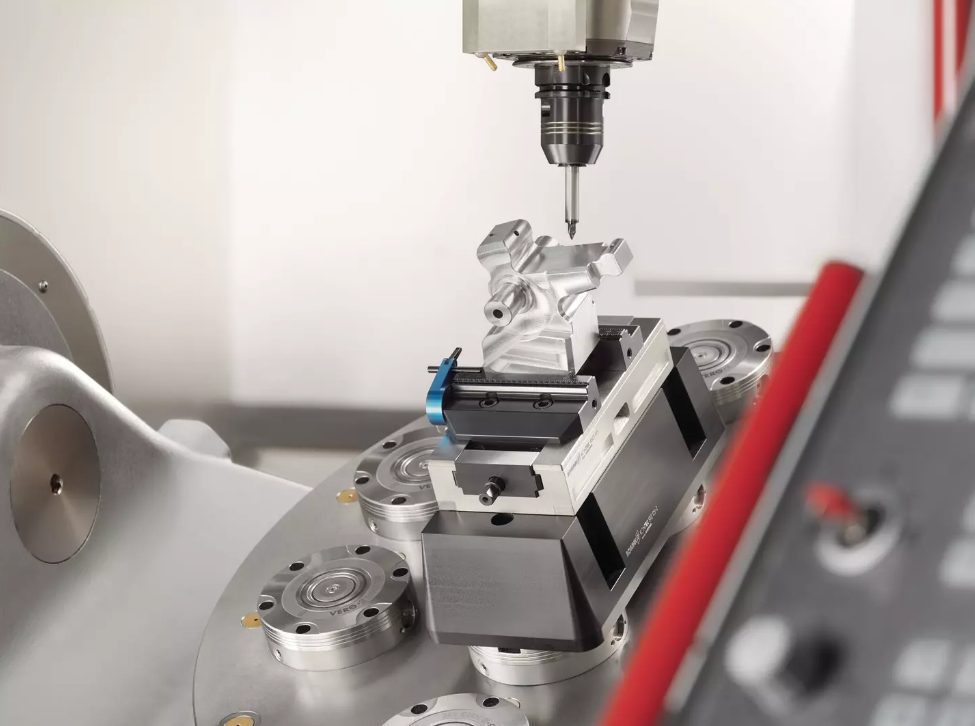How Advanced Machining Tools Improve Productivity in Industries
Productivity has been the driving force behind industrial development all along. Whether it is a small workshop or a large factory, every industry is looking for ways to make more within shorter durations without losing out on quality. This is where machining tools come in as a game-changer. They are not only cutting, shaping, or drilling tools, they are precision, efficiency, and innovation enablers.
These tools have transformed vastly through the years. Today’s machining tools are manufactured using superior materials, automated systems, and computerized technology, making them much more advanced than older machines. Whether you are working on heavy-duty metal components or precision aerospace components, the right machinist equipment guarantees speed as well as reliability.
In this blog, we will discuss what are machining tools, the most critical lathe machine tools, and how cutting-edge versions of these tools are enhancing productivity across industries.
What Are Machining Tools?
First of all, let’s pose the most fundamental question, what are machining tools? Simply put, machining tools are machines employed to shape, cut, bore, grind, or drill a material into the desired design. The material in question can range from metals and plastics to composites and wood.
The crux of machining is the removal of unwanted material to provide accuracy and a smooth surface finish to the end product. Previously, the same operation was carried out manually to a limited accuracy. Now, there are electricity-driven, hydraulic-driven, or even super-advanced CNC (Computer Numerical Control) systems that power machining tools to enable manufacturers to produce nearly flawless results.
Examples are lathe machine tools, milling machines, drilling machines, grinding machines, and CNC machining centers. Each tool plays a specialized role and is selected according to the task and level of precision desired.
The Evolution of Machining Tools
The origin of machining is traced back to ancient civilization, where machinists employed hand-operated machinery to cut stones and metals. With the advent of the industrial revolution came the powered machine, and that is how modern machining has come to begin.
Fast forward to the present, and we now have robotic arms, computer-aided lathe machine tools, and multi-axis CNC machines that can execute intricate operations with unprecedented speed. These machines are not merely faster but also intelligent, given integration with AI and IoT. They can anticipate maintenance schedules, track tool wear, and minimize downtime substantially.
This advancement is what makes machining a backbone of sectors such as the automotive, aerospace, electronics, and energy industries.
Types of Machining Tools Employed in Industries
Various operations require various tools. Some of the most common types of machining tools are listed below:
- Lathe Machine Tools – A very old and multi-purpose machine, a lathe turns the workpiece while other tools cut, drill, or tool it. Lathes are employed in turning, facing, threading, and numerous others.
- Milling Machines – These machines cut away material with rotary cutters. They are ideal for making slots, gears, and complex shapes.
- Drilling Machines – Widely utilized in nearly every workshop, they make accurate holes in materials of different thicknesses.
- Grinding Machines – Used to finalize operations, these machines give a smooth finish and high accuracy.
- CNC Machining Centers – Fitted with sophisticated software, they integrate several processes, turning, milling, drilling, into one, cutting down setup time drastically.
These individual tools each have their own benefits, but collectively, they constitute the backbone of today’s manufacturing.
How Advanced Machining Tools Enhance Productivity
- Precision and Accuracy – Industries require products that are produced within close tolerances. Precise machining tools, particularly CNC machines, provide accurate results with consistency. This minimizes the possibility of errors and reduces rework, saving time and money.
- Increased Speed of Operations – Advanced machines, in comparison to hand tools, are able to perform at high speeds without sacrificing precision. A job that took hours can now be done within minutes, contributing to improved productivity directly.
- Automation Reduces Human Error – By automating the repetitive operations, industries decrease their reliance on manual intervention. This eliminates human error, provides consistency, and allows employees to devote more time to more intricate tasks.
- Flexibility in Manufacturing – With programmable tools, industries are able to move from the production of one component to another with little downtime. Such flexibility is essential for industries handling customized or low-volume runs.
- Durability and Longer Tool Life – Modern machining tools are made with advanced alloys and coatings, giving them higher durability and longer lifespan. This reduces frequent replacements and lowers production costs.
Lathe Machine Tools: Still the Heart of Machining
Among all the machining tools, the lathe remains a workhorse of workshops and industries. Lathe machine tools are employed to turn workpieces against a cutting tool by rotating them. They can work with materials from metals to plastics and even composites.
Functions of lathes include:
- Turning cylindrical components.
- Thread cutting for screws and bolts.
- Facing to provide smooth surfaces.
- Boring accurate internal holes.
Even with advanced CNC systems, lathes remain relevant because of their versatility and reliability. Small workshops rely on manual lathes, while industries prefer automated CNC lathes for high-volume production.
Applications of Advanced Machining Tools in Different Industries
- Automobile Industry – Modern machining tools are vital in producing engines, shafts, and gears with utmost precision. CNC machines ensure mass production while maintaining consistency in every part.
- Aerospace Industry – Aerospace applications require light but high-strength parts. Multi-axis CNC precision machining guarantees that turbine blades, aircraft components, and other products adhere to strict safety requirements.
- Electronics Industry – Circuit boards to fine connectors, machining guarantees precision in micro-components where a very small mistake can create significant issues.
- Energy Sector – Whether for oil and gas or renewable energy, sophisticated kinds of machining tools are employed to produce turbines, valves, and pumps that have to endure tough conditions.
- Medical Industry – Machining is an important part of making surgical equipment, implants, and medical devices, where safety and precision are top priorities.
Obstacles in Employing Machining Tools
Though sophisticated machining tools have several benefits, industries continue to encounter difficulties like:
- High initial cost of using advanced CNC systems.
- Need for trained operators for programming and maintenance.
- Wear on tools due to constant high-speed usage.
- Large-scale production energy consumption.
But with good training and preventive maintenance, these can be controlled efficiently.
Future Trends in Machining Tools
Things are looking even brighter for machining as industries are shifting towards smart manufacturing. Some of the future trends are:
- IoT-Enabled Machining – Machines that provide real-time information on performance, wear, and energy use.
- AI Integration – AI systems forecasting tool life and adjusting cutting speeds.
- 3D Hybrid Machining – Combination of additive (3D printing) and subtractive machining, providing unlimited design flexibility.
- Eco-Friendly Tools – Designing tools that consume less energy and waste less material.
These advances will not only enhance productivity but also converge with the principles of sustainable manufacturing.
Maintenance of Machining Tools
In order to achieve optimal output from machining tools, maintenance should be carried out on a regular basis.
- Keep tools well lubricated.
- Check for wear and replace broken parts early.
- Check alignment and calibration for precision.
- Train operators to manage machines efficiently.
A machine well maintained not only lives longer but guarantees consistent performance.
Conclusion
From old manual systems to highly advanced CNC configurations, the history of machining tools has revolutionized industries entirely. They offer the precision, speed, and flexibility that are necessary to remain competitive in today’s fast-paced era.
Whether it is the reliable lathe machine tools or advanced multi-axis machining centers, every tool is important in boosting productivity. Knowing the various types of machining tools and how they help various sectors enable manufacturers to make better choices to enhance output and save money.
With the progression of technology, the integration of hybrid processes, IoT, and AI will only enhance machining to become more efficient and sustainable. Simply put, new machining tools are not merely machines, they are the industrial innovation backbone.





























